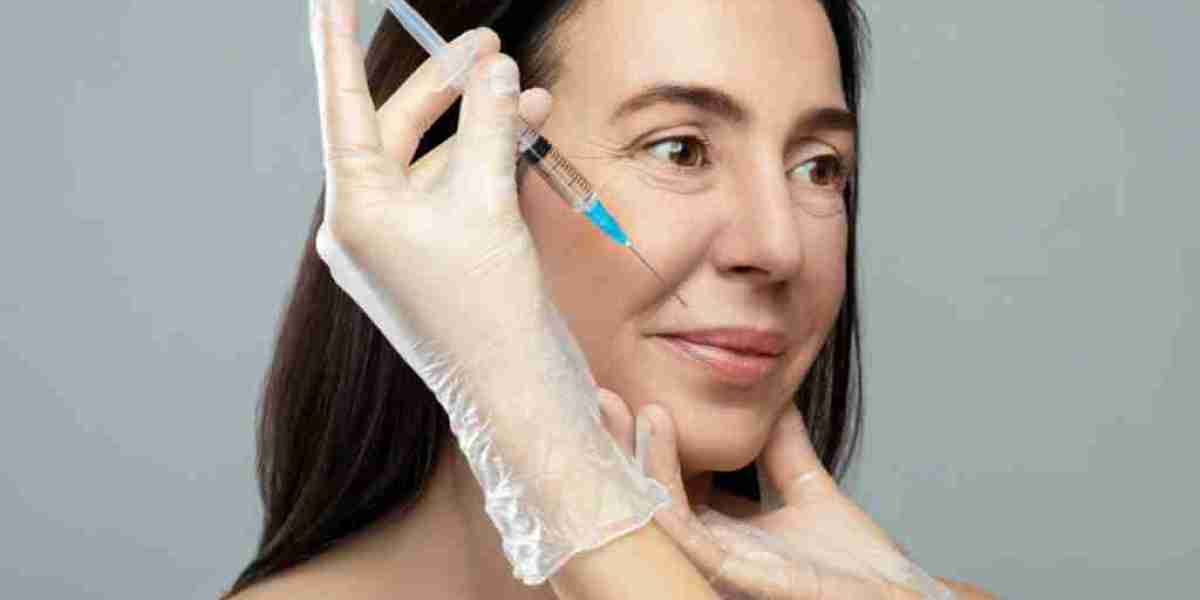Dermal fillers are widely used for enhancing facial features, reducing wrinkles, and restoring volume. They are non-invasive procedures that offer an attractive alternative to surgical facelifts. However, like any cosmetic treatment, Dermal Fillers(الحشوات الجلدية) carry certain risks that should not be overlooked. While most people experience no issues, understanding the potential risks of dermal fillers is important before making a decision. In this article, we will explore the possible risks, the importance of safe treatment, and what you need to consider before undergoing dermal filler treatments.
Importance of Understanding the Risks:
Knowing the risks associated with dermal fillers ensures that you make an informed decision about the treatment. Dermal fillers offer numerous aesthetic benefits, but being aware of potential side effects can help you manage expectations and mitigate any unwanted outcomes. The safety of dermal fillers relies on several factors, including the type of filler used, the expertise of the professional administering the treatment, and how well you follow aftercare instructions.
Understanding the risks also enables you to take appropriate precautions and avoid complications. Each individual’s skin reacts differently, and factors like age, skin condition, and medical history can influence how you respond to dermal fillers.
Risks of Dermal Fillers:
While dermal fillers are generally safe, there are several risks involved, especially when the procedure is not performed correctly or when aftercare guidelines are ignored. Some of the risks include:
Bruising and Swelling:
One of the most common side effects of dermal fillers is bruising and swelling at the injection site. These effects are usually temporary and should subside within a few days. However, in some cases, the swelling may persist longer, leading to discomfort and an uneven appearance.
Allergic Reactions:
Though rare, some individuals may experience allergic reactions to the substances in dermal fillers. These reactions can manifest as redness, itching, or swelling around the treated area. It’s important to notify your provider of any known allergies before undergoing treatment, especially to ingredients like hyaluronic acid or lidocaine.
Infection:
As with any injectable treatment, there is a small risk of infection at the injection site. This risk can be minimized by following proper aftercare instructions, such as keeping the treated area clean and avoiding touching it unnecessarily. Infections can result in redness, pain, and prolonged swelling, which may require medical intervention.
Lumps and Bumps:
In some cases, dermal fillers can create lumps or uneven areas beneath the skin, especially if the filler is not properly injected. These bumps can be massaged out, but if they don’t resolve, further treatments may be needed to achieve smooth results.
Vascular Occlusion:
Vascular occlusion occurs when the filler is injected into a blood vessel, blocking blood flow to the area. This is a serious complication that can lead to tissue damage, scarring, and even vision problems if the filler obstructs blood flow to the eyes. Immediate treatment is necessary to prevent long-term damage.
Nerve Damage:
Although rare, dermal fillers can sometimes cause nerve damage if the injection needle comes into contact with a nerve. This can result in numbness, tingling, or a loss of sensation in the treated area. Fortunately, nerve damage is usually temporary and resolves on its own over time.
Benefits of Dermal Fillers:
Despite the potential risks, Dermal Fillers Injection(حقن الحشوات الجلدية) provide numerous benefits that make them a popular choice for non-surgical facial rejuvenation. These benefits include:
Immediate Results: Dermal fillers provide quick and noticeable results that can enhance your facial appearance without the need for lengthy recovery periods.
Non-Surgical: Dermal fillers are non-invasive treatments, meaning there’s no need for incisions or anesthesia. This reduces the risks typically associated with surgical procedures.
Natural-Looking Results: When applied correctly, dermal fillers offer subtle, natural-looking enhancements that don’t drastically alter your appearance. The goal is to restore volume and smooth out wrinkles without looking "overdone."
Long-Lasting Effects: The results of dermal fillers can last anywhere from six months to two years, depending on the type of filler used and the area treated.
These benefits make dermal fillers a valuable option for individuals looking to enhance their features without undergoing surgery.
Frequently Asked Questions (FAQs):
1. How long do dermal fillers last?
The longevity of dermal fillers depends on the type of filler used and the area treated. Hyaluronic acid-based fillers typically last six to twelve months, while other types of fillers, like those used for deeper volume restoration, can last up to two years.
2. Can I reduce the risk of side effects?
To minimize risks, choose an experienced professional who uses FDA-approved fillers and follows proper safety protocols. Additionally, following aftercare instructions, such as avoiding sun exposure and strenuous activities, can help reduce side effects like swelling and bruising.
3. What should I do if I experience a complication?
If you experience any unusual symptoms, such as severe swelling, persistent pain, or changes in skin color, contact a professional immediately. In rare cases, complications may require medical attention to prevent long-term damage.
4. Are there any alternatives to dermal fillers?
Yes, alternatives to dermal fillers include Botox, chemical peels, laser treatments, and surgical options like facelifts. The best option depends on your specific concerns and desired results. A consultation with a professional can help determine which treatment is most suitable for your needs.
How to Minimize the Risks of Dermal Fillers:
While risks are associated with dermal fillers, there are steps you can take to minimize the chances of complications:
Choose a Skilled Practitioner:
Ensuring that the practitioner administering the dermal fillers is highly skilled and experienced is one of the most important factors in reducing risks. A trained professional will have the expertise to inject the filler correctly and avoid complications such as vascular occlusion or nerve damage.
Follow Aftercare Instructions:
Proper aftercare is essential for minimizing risks and ensuring the best possible outcome. This may include avoiding touching or massaging the treated area, steering clear of excessive sun exposure, and refraining from intense physical activity for a short period after treatment.
Understand the Filler Type:
Not all dermal fillers are the same, and some are better suited to specific areas of the face than others. Understanding which type of filler will be used and why it's appropriate for your treatment goals can help set realistic expectations and reduce the chance of side effects.
Disclose Medical History:
Be open about your medical history, including allergies, previous cosmetic treatments, and any pre-existing conditions. This information will help your practitioner determine whether dermal fillers are the right choice for you and if any precautions need to be taken.
Start with a Consultation:
Before proceeding with dermal fillers, it's important to have a thorough consultation with a professional. This allows you to discuss your goals, ask questions about potential risks, and ensure that dermal fillers are the right option for you.
Conclusion:
Dermal fillers are an effective and minimally invasive solution for rejuvenating the face, but like any cosmetic procedure, they come with risks. Being aware of these risks—such as bruising, allergic reactions, and infection—can help you make an informed decision. The key to a successful treatment lies in selecting a skilled professional and adhering to post-treatment care guidelines. While the benefits of dermal fillers are significant, understanding the potential risks and knowing how to minimize them ensures that you can achieve the desired results safely. Always take the time to consult with a professional before undergoing treatment to ensure that dermal fillers are a suitable option for you.



![Genshin Impact: Connect with the Community [Links]](https://pungi.b-cdn.net/upload/photos/2025/04/XtSyLlO5K1fgoJPnBLSS_11_251ba787afbe953af719d8c531565bb1_image.png)
